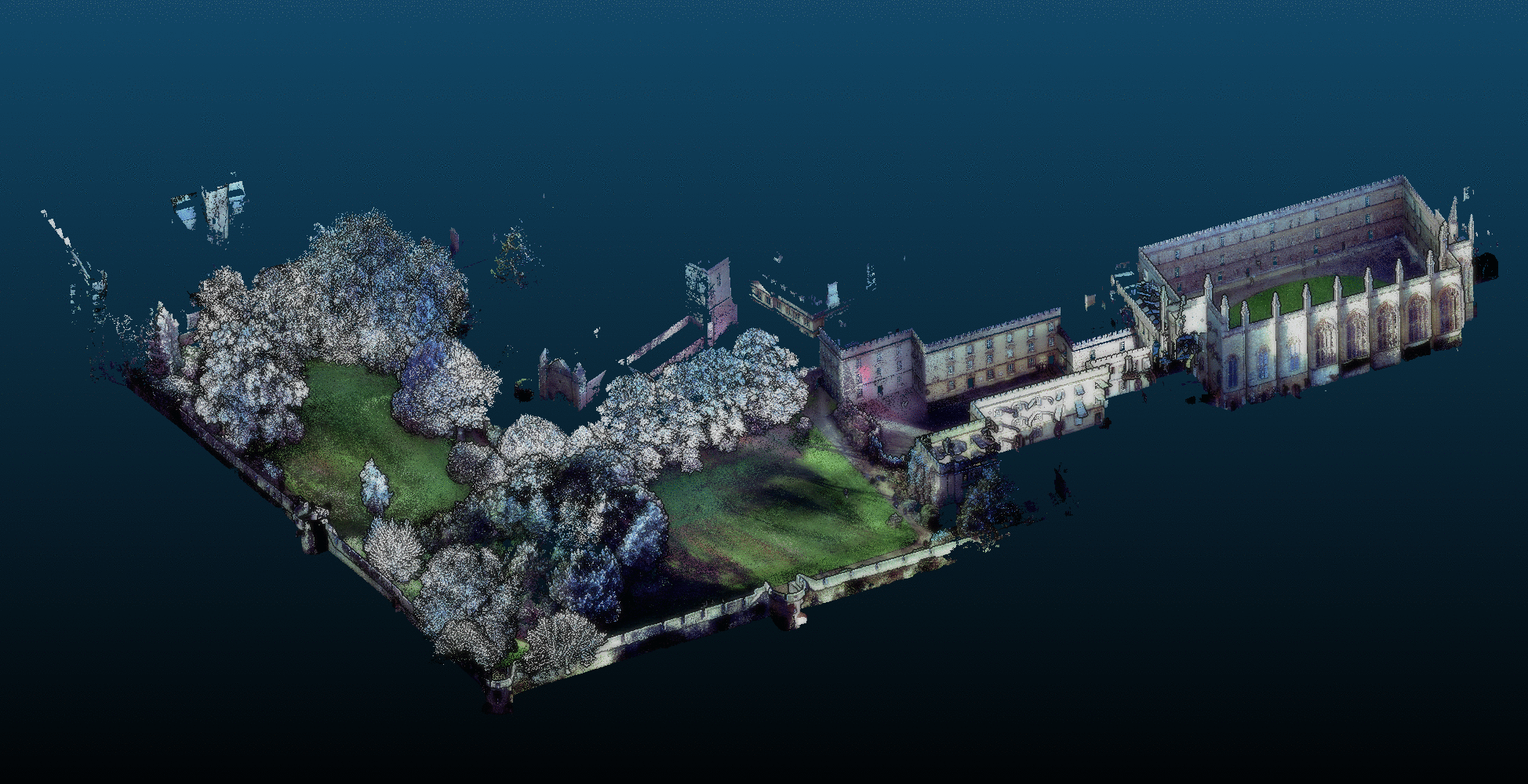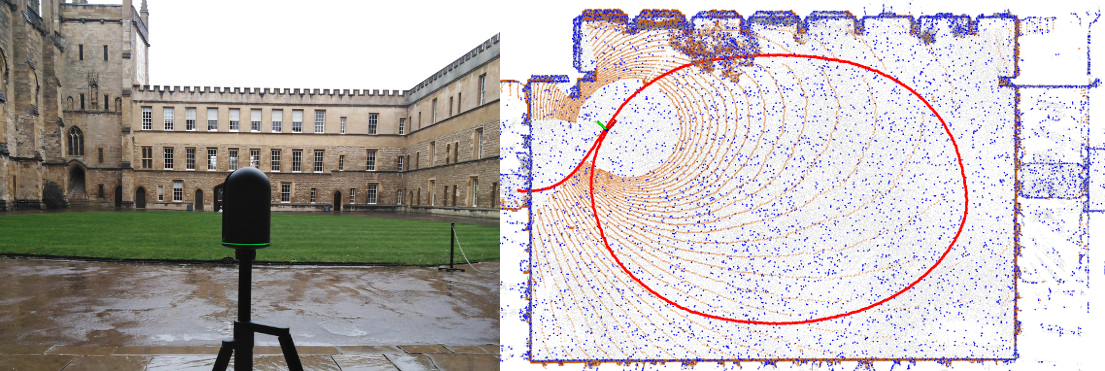Ground Truth

Ground Truth Point Cloud
To provide the prior map of our dataset, we use a survey-grade 3D imaging laser scanner, Leica BLK360. The New College environment is approximately 135×225 m2. We collected 47 static point clouds over 8 hours. The capture locations were placed closer together in the Parkland due to its foliage and less structured features. The final map consists of about 290 million points.
All the point clouds were matched with over 90% of inliers. According to the Leica BLK360 datasheet, the achievable accuracy for 3D points in the map is 6 mm at range 10 m and 8 mm at range 20 meters. Hence, we can conclude that the accuracy of point in our entire map is better than 1 cm since the distance of all the points in the map is no more than 20 meters from the scanning stations.
Ground Truth Poses
The ground truth poses of our dataset are obtained with an approach whose core uses Iterative Closest Point (ICP) to register each Ouster point cloud to the prior map Leica.
Having generated the accurate prior map, we first down-sampled the map cloud to 1 cm resolution. We used a libpointmatcher filter chain [Pomerleau 2013] to register each Ouster to the map. We later transformed and extrapolated the camera pose to achieve 30Hz ground truth for the camera and 10Hz ground truth fror the LIDAR sensor.

The poses are expressed in RS_C1 frame for the stereo cam setup (see here) and Base frame for the multi cam setup(see here)
The format is .csv with the following conventions for the columns:
- seconds since Epoch
- nanoseconds since Epoch
- x-axis position
- y-axis position
- z-axis position
- x-quaternion orientation
- y-quaternion orientation
- z-quaternion orientation
- w-quaternion orientation